
by Ana Gaby | Jul 30, 2015 | 2015, Being Thankful, Childhood, Communication, Family, Grandparent, Kids, Life, Memories, Motherhood, Parenting, Relationships, Respect, USA, World Motherhood, Younger Children
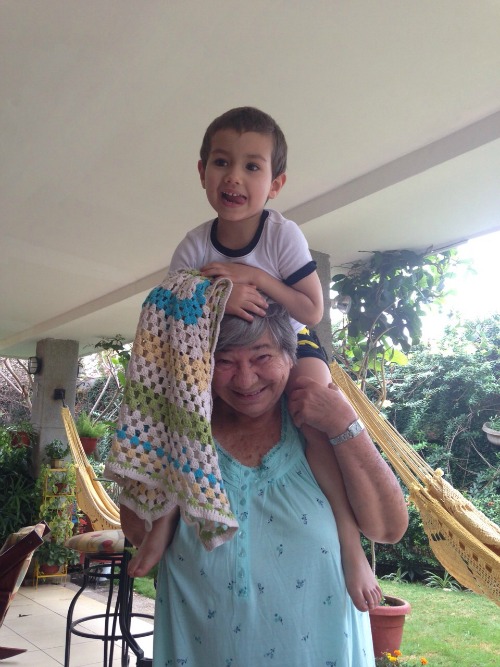
I still have vivid memories of my great-aunt seeding and peeling off the skin of grapes for me to eat. I enjoy thinking about the times my mom dropped me off at another great-aunt’s home and how we would walk to a store and she would buy me my favorite chocolates from the candy counter. I remember my paternal grandmother teaching me to make home made flour tortillas and the love and care she put into making dozens of freshly made tortillas every morning for her family to have for breakfast. My maternal grandmother has always been willing to remove whatever accessory she’s wearing and immediately gift it to you if you just mention that it’s pretty.
I grew up surrounded by women who generously gave all of themselves to their children and grandchildren and I pray I can be at least a little bit like them.
(more…)
Ana Gaby is a Mexican by birth and soul, American by heart and passport and Indonesian by Residence Permit. After living, studying and working overseas, she met the love of her life and endeavored in the adventure of a lifetime: country-hopping every three years for her husband’s job. When she's not chasing her two little boys around she volunteers at several associations doing charity work in Indonesia and documents their adventures and misadventures in South East Asia at Stumble Abroad.
More Posts
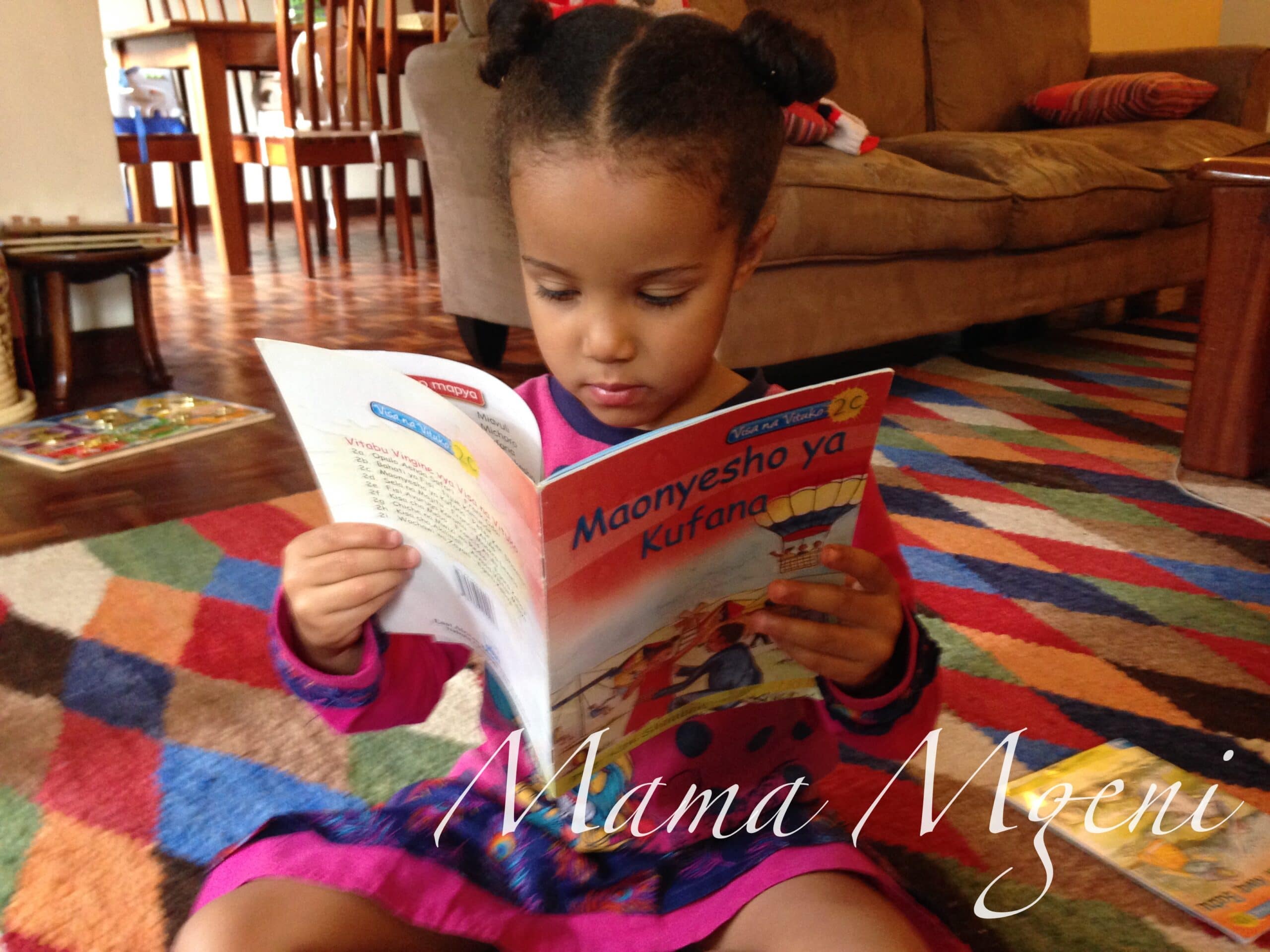
by Tara Wambugu | Jul 21, 2015 | 2015, Africa, Bilingual, Kenya, Language, Tara Wambugu, World Moms Blog, World Motherhood, Younger Children
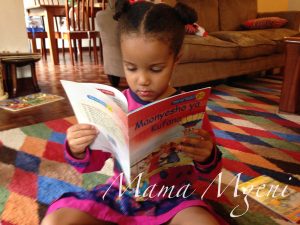
Learning Swahili
I have every reason in the world to learn Swahili. It’s one of the mother tongues of my husband’s (though Kikuyu is his real mother tongue, as he will tell you). It’s one of the official languages of the country, I call home. And a few years ago, a new compelling reason came along: our first-born child. We’re raising both of our kids to be bilingual, following the OPOL (One Parent One Language) approach.
I speak to the kids in English, while my husband speaks to them in Swahili. Our youngest daughter is just starting to use her first words – a smattering from both languages. Our eldest daughter is now 4 years old, and while she favors English when speaking, she understands nearly everything that she hears in Swahili.
It was difficult at first for my husband to speak Swahili with our newborn daughter. It didn’t feel natural to him, since our shared language has always been English. He had to constantly remind himself, and would often stop mid-sentence to repeat what he had said in Swahili. He told me that he didn’t want to say things to the kids that I couldn’t understand. But having my husband speak to our children in Swahili was probably the best thing for my own budding ability.
I have found that by listening to my husband speak simple Swahili to the children, I have begun to learn the language the way native-speaking children learn it: starting with the basics, slowly building with grammar and vocabulary. I may not be able to contribute to a political discussion around the dinner table with the extended family, but learning the language with my children has certainly increased my understanding of what’s being said around me, on the whole.
Listening to my husband read Swahili bedtime stories aloud to the kids has also helped my own language skills.
I find that random lines from the stories will start to swirl around in my head, subconsciously. There is something useful in listening to the same strings of words over and over, committing them to memory, even if by accident.
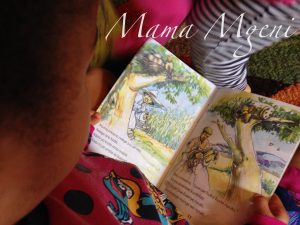
Learning Swahili
While nearly everyone we meet in Nairobi speaks English, learning Swahili with my kids has definitely helped me to communicate better with the people in our community that we see every day. Simple words like where (wapi), how many (ngapi), up (juu), and down (chini) actually come in quite handy when speaking to the staff at the greengrocer or to the attendant in a crowded parking lot. Furthermore, people are delighted when they see that I’m making an effort, and even more delighted when they see the children speaking in the local language.
It is so important to us that our children grow up speaking and understanding both of our mother tongues. And if I’m able to improve my rusty Swahili skills along the way, all the better!
Are your kids growing up in a multilingual household? Have you ever learned a new language with your children?
This is an original post to World Moms Blog by Tara Wambugu, our new contributor from Kenya.
Tara Wambugu is a wife, a mother of two, and a Kenya-based lifestyle blogger covering parenting, family life, travel, and more. A former aid worker, Tara has worked in various countries in Europe, Central Asia, Africa, and Central America. She is now a stay-at-home mom living in Nairobi with her husband and their two sassy little girls. You can follow Tara and her family’s adventures on her blog, Mama Mgeni.
More Posts - Website
Follow Me:





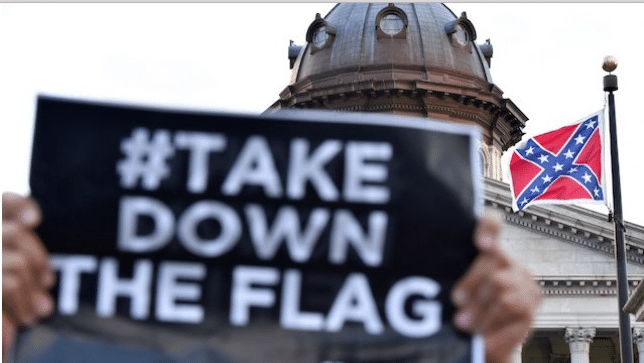
by World Moms Blog | Jul 14, 2015 | 2015, Human Rights, USA, World Moms Blog, World Motherhood

On June 17th, 2015, nine lives were suddenly lost in Charleston, South Carolina in the USA, when a man joined a prayer group in a church and opened fire. Today, on the blog, we carry the passionate words of a mother from South Carolina, Yolanda M. McCloud of “Lesser Known Feats of Awesomeness“, to tell the story…
There are no words that can describe the sorrow and despair that has been felt around my state and this nation in the past several weeks. June 17th will forever be emblazoned on our brains as the day when one man, one gun, one mission, walked into a church, not just any church, Mother Emanuel AME, one of the South’s most historically black churches, and changed nine families forever. One man, one failed mission, one gun, nine people.
As I reflect on this, I have said in the weeks following that this type of act just does not happen in South Carolina, let alone in a church. What type of monster walks into a church, sits through Bible study, and then shoots the people he has sat around with for an hour? Who does that to anyone? As we embark on the months ahead, I am saddened by the display of hatred that has taken place following the dreadful day.
Charleston has shown the world how to weep for the lost, but the rest of our State and country has become unraveled at the seams embattled in the same argument, over a flag.
A flag, the center of the unrest at this moment, not the nine lives that were doing God’s work by worshipping and learning his word and the principles for which Jesus died for. No, a scrap of cloth that was created out of hate. That is what society has made the central conversation. And now, it feels more like we are back in the 1960’s with the burning of black churches, too.
The flag issue seems to be the core of the unrest and the destruction of houses of worship around the South. The creator of this flag, William T. Thompson called this flag the “White Man’s Flag” and said that “As a people we are fighting to maintain the heaven-ordained supremacy of the white man over the inferior or colored race; a white flag would thus be emblematic of our cause…As a national emblem, it is significant of our higher cause, the cause of a superior race, and a higher civilization contending against ignorance, infidelity, and barbarism.” Supremacy, white man, and colored race…heritage.
The debate over heritage and the cause of a war long by gone, a war that was fought so that men and women in the South could keep their slaves, human beings that they owned like cattle, should not be happening today.
A scrap of cloth that now the governor of South Carolina and the governing body has found the courage to say, “enough is enough,” and remove it in honor of the Emanuel 9. I am honored that I was able to see it come down on July 10th, 2015 and pray that it never graces its perch again.
Now this scrap of cloth has long been used as a tool of hate and is being revered by many as a large part of their heritage, citing that the Civil War was fought over state’s rights. In 1962, Senator Strom Thurmond stood in front of Congress to ask for more money for schools to stay segregated and the flag was hoisted to the State House dome and stayed there as rebellion against the civil rights movement. It is being seen to many as a national treasure.
As I sit and watch friends and others debate the cause of the Civil War and the creation of this flag, they talk about how their heritage is wrapped up and tied in a scrap of cloth.
And I begin to wonder, what if instead of black people, slaves bore the shade of skin like those supporting the confederate flag? Would there still be the debate over heritage?
I was born and raised in the South. I grew up knowing that people with my complexion were viewed as “lesser than” because we are darker than my lighter complexioned brothers and sisters.
I grew up knowing that there used to be bathrooms, water fountains, entrances for blacks and they weren’t allowed to use property or doors marked “whites only.” That blacks and whites went to separate schools and the words “separate but equal” were often used when things were anything but. We are aware more than ever that this flag is used as a weapon of supremacy over my race and the race of many others.
We are living in dangerous times. Where is the respect that so many people of color protested, marched, sat-in and risked their lives to achieve in our country’s history? How and why do we find ourselves unsafe again through such a hateful act just because of the color of our skin?
We are living in times where people do not seem to care for life and respect each other after all the civil rights progress that has been made since the 1960s. People are hurling hurtful, unintelligent statements about race on social media for many to see. I see it.
We are living in times where church is no longer sacred. When I see the images of black churches being burned to the ground, it saddens me further because those churches, they are all of our churches no matter our denomination, no matter our race, no matter our gender. They are all God’s House, and we are all welcome. To see them go up in flames is sad because once again, God’s House is not sacred. Our country was founded on the principles of freedom of religion.
If a person is different, meaning if they are not equal to a person in ethnicity, finances, or educational background, then they are less. This extends far beyond “white privilege”. This is the message I am receiving. The message I, and so many others, are feeling.
Churches can be rebuilt, flags can be removed, but life cannot be restored. And as people weigh in on both sides of this debate, I think what gets lost is that children lost their parents, families lost their aunts, uncles, and grandparents. Nine lives lost, one of those lives I knew and applauded and appreciated.
I ask, How many more lives do we have to lose to violence because my skin doesn’t look like yours?”
I weep for the Charleston 9, I weep for Charleston the City, and I weep for the world that thinks that it’s okay to threaten, demean, and belittle those that do not believe in the same thing that others believe in.
I hope that my home state, the great State of South Carolina, will remember this day and the removal of the flag and continue to send a message that hate is no longer allowed.
I hope that the people who are burning churches are caught and publicly known as the hate filled monsters they are. If no other place on this earth is sacred and safe, a church should be sacred and safe. Mother Emanuel and every place of worship should be sacred and safe.
It shouldn’t be about culture, heritage, or being white or black. It should be about people. I ask you to empathize. It’s about the fact that Mother Emanuel could have been the Catholic Church up the street, could have been Temple, and could have been any mosque around the corner. It could have happened in North Carolina, Georgia, New York, or Maine. Your church, my church, from Greeleyville, South Carolina to the State of Tennessee and beyond, the rubble that once was a house of worship could have been made anywhere. The hate must stop.
We lift their families up in prayer, and we remind the world that greatness was lost because of one man, one gun, one failed mission, and nine families and a nation are forever changed.
This is an original guest post to World Moms Blog by Yolanda M. Gordon of South Carolina, USA. You can find her on her blog, “Lesser Known Feats of Awesomeness.”
IMAGE CREDIT: WWW.THEHILL.COM
World Moms Blog is an award winning website which writes from over 30 countries on the topics of motherhood, culture, human rights and social good. Over 70 international contributors share their stories from around the globe, bonded by the common thread of motherhood and wanting a better world for their children.
World Moms Blog was listed by Forbes Woman as one of the "Best 100 Websites for Women 2012 & 2013" and also called a "must read" by the NY Times Motherlode in 2013. Our Senior Editor in India, Purnima Ramakrishnan, was awarded the BlogHer International Activist Award in 2013.
More Posts

by Nadege Nicoll | Jul 14, 2015 | 2015, Boys, Caring, Childhood, Communication, Family, Kids, Life Lesson, Motherhood, Nadege Nicoll, Parenting, World Motherhood, Younger Children

Sometimes, being kind hearted can bite you in the butt, you know. I’m not advocating to not be kind. But just be aware that sometimes, you get more than the satisfaction of having helped a cause. You get a nagging child who won’t let you be until you surrender. (more…)
Nadege Nicoll was born in France but now lives permanently in New Jersey with her family. She stopped working in the corporate world to raise her three children and multiple pets, thus secretly gathering material for her books. She writes humorous fictions for kids aged 8 to 12. She published her first chapter book, “Living with Grown-Ups: Raising Parents” in March 2013. Her second volume in the series just came out in October 2013. “Living with Grown-Ups: Duties and Responsibilities” Both books take an amusing look at parents’ inconsistent behaviors, seen from the perspective of kids. Nadege hopes that with her work, children will embrace reading and adults will re-discover the children side of parenthood. Nadege has a few more volumes ready to print, so watch this space…
More Posts - Website
Follow Me:



by Mannahattamamma (UAE) | Jul 2, 2015 | 2015, Childhood, Feminism, Global Citizenship, Government, Health, Human Rights, International, Motherhood, Newborn Health, Poverty, Save The Children, UAE, USA, World Motherhood

Save The Children
There are some causes that are tricky to rally people around: not everyone wants to ban fur coats, for instance; not everyone thinks that restaurants should post calorie counts on their menus. There are other causes, though, that seem pretty much no-brainers: access to clean water, for instance. Is anyone really going to say “yeah, dirty water, I’m a big fan!” Or saving children. Is anyone really going to say (publicly, anyway) that it’s not a good idea to save children?
Even if we all agree that children should be saved, however, we know that all over the world there are children who need saving, in places where governments and infrastructure don’t seem capable of doing what needs to be done. That’s where organizations like Save the Children step in: they help stitch together the services that can help families survive and give governments a much needed hand.
Save the Children came out with its annual “State of the World’s Mothers” list, which uses five metrics to determine where it’s good to be a mother (and a child). The metrics – maternal health, children’s well-being, educational status (of mothers), economic status, and political status— are combined to give an overall score, which determines where a country falls on the list. Of 179 countries, there are the usual suspects at the bottom of the list—countries where war, natural disasters, and poverty combine in a perfect storm of catastrophe: places like Haiti, or Sudan, or Pakistan.
But there are surprises, too, like the fact that the United States doesn’t even crack the top twenty. Nope, the good ol’ US of A pulls in at 33.
Thirty-third in the world, for a country whose overall wealth and education trumps pretty much everywhere else. The US was beaten by, among others, Slovenia, Belarus, Croatia, and the Czech Republic, as well as all those Scandinavian countries that consistently outperform everyone else when it comes to quality of life issues.
You know what most of these places have that the US does not? A significantly higher percentage of women in government. I suppose a statistician would say that fact is not causal but correlative, and I’m sure that some people would insist that just having women in government won’t automatically make things better for women and children (and thus society), but maybe we should try, and then see what happens?
I live at the moment in Abu Dhabi, in the United Arab Emirates, another wealthy country that doesn’t crack the top twenty on this list. I suppose that for many Westerners, it might seem impossible any Middle Eastern country would score well on a list having to do with women’s lives, but the statistics on this list might help defuse those stereotypes. According to this index, 17.5% of seats in UAE government organizations are held by women, compared to 19.5% in the US; in terms of lifetime risk of maternal death, it is better to be a woman in the UAE: 1 in 5800 versus 1 in 1800 in the US. Women in the US average about 16 years of schooling, women in the UAE about 13; and women in the US tend to be wealthier than women in the UAE (53K for the US, 38K for the UAE).
The Save the Children list doesn’t index maternity leave policy, but that offers another interesting point of comparison.
Women in the UAE only receive 45 days of maternity leave, which isn’t enough, obviously, as any woman who has given birth understands. Women in the US get twelve weeks of maternity leave (although I had to call it “disability” leave in order to ensure that I got the requisite number of days). Twelve weeks, that is, of unpaid leave. John Oliver brilliantly skewered this policy on Mother’s Day, pointing out that the United States aligns with Papua, New Guinea, as the only two countries in the world with no paid parental leave policy. In the UAE, if a woman has a medical certificate that attests to her need for more time at home, she can take up to 100 days of additional (unpaid) leave.
Organizations like Save the Children do invaluable, back-breaking work among desperate populations, but their work raises a question that those of us who live with more privilege should be asking–loudly–of ourselves and our communities: why aren’t we all tied for first place? What has to happen to force “resource-rich” countries take care of its most vulnerable citizens? Why aren’t we doing better?
Where does your country rank in this list? And how do you think your country can do better? Any thoughts?
This is an original post to World Moms Blog by Deborah Quinn in the United Arab Emirates of “Mannahattamamma.”
Photo credit to ‘Save The Children’.
After twenty-plus years in Manhattan, Deborah Quinn and her family moved to Abu Dhabi (in the United Arab Emirates), where she spends a great deal of time driving her sons back and forth to soccer practice. She writes about travel, politics, feminism, education, and the absurdities of living in a place where temperatures regularly go above 110F.
Deborah can also be found on her blog, Mannahattamamma.
More Posts
Follow Me:


by Jennifer Prestholdt (USA) | Jun 30, 2015 | 2015, Childhood, Kids, Life Lesson, World Moms Blog, World Voice, Youth
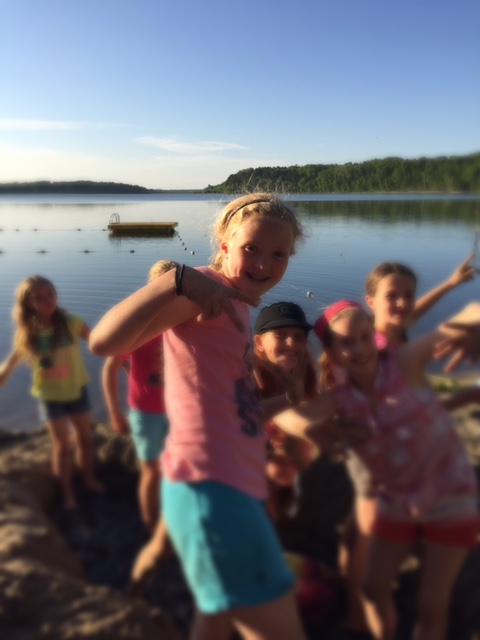 I just returned from two weeks in the woods of northern Minnesota. This was my sixth summer reprising my college job as a camp counselor. The opportunity to be at camp at the same time as my three children has allowed me a unique perspective: I get to witness firsthand the benefits of sending my kids to camp.
I just returned from two weeks in the woods of northern Minnesota. This was my sixth summer reprising my college job as a camp counselor. The opportunity to be at camp at the same time as my three children has allowed me a unique perspective: I get to witness firsthand the benefits of sending my kids to camp.
I am proud to work at Skogfjorden, the Norwegian language and cultural immersion program that is one of the fourteen Concordia Language Villages. Respekt is the guiding principle; all deltagere (campers) and staff promise to both have and take responsibility for their actions as part of the Skogfjorden promise. But I am willing to bet that most of the following benefits of sending your kids to sleepaway camp apply to pretty much any high quality summer program.
Kids do things at camp that they may never attempt at home. Being outside of their normal social circle allows kids to try new things. Sometimes this is as simple as a picky eater who samples food at camp that he would flat-out refuse at home. My daughter, for example, barely nibbles the kid-friendly items in her lunchbox but she chows down on almost everything she is served at camp. But sometimes I have seen kids do incredible things that they would never dream of doing at home. I remember a girl in my cabin one year whose parents pulled me aside when they dropped her off to brief me on how incredibly shy she was. And she WAS painfully shy. But exactly one week later, I saw her stand up in front of the entire camp and sing a solo a cappella in the talent show. It was so beautiful that I teared up. Her parents saw a video of it on the camp blog and were. Totally. Blown. Away.
The corollary of this is that kids get to explore different aspects of their personalities at camp.
At school, a kid may be labeled as this, that or the other, but they get a chance to start fresh at camp. At camp, most kids just get to be valued for who they are, without having to worry about how they are viewed by their long-term peers. In fact, two of my three kids kind of don’t want their friends to go to camp with them. It is THEIR place and don’t want to cross the streams of their lives.
Camp helps kids learn how to problem solve and make decisions for themselves. One of the things that I have learned from parenting is that kids actually have very little control over their lives. Understandably, that can be frustrating. In a lot of ways, camp helps children feel in control of what happens to them. At Skogfjorden, kids get to choose between activities twice a day, they choose what they will do during free time, choose how much money they will take out of the bank and what they will buy with it, choose to be kjempenorsk and speak only Norwegian all day. I think that these experiences make kids feel competent and independent, which in the end will help them to be better problem-solvers in any new situation.
And sometimes it can lead to brilliance. One summer, I was assigned to work the camp candy store (or kiosk, as we call it at Skogfjorden). In terms of kid priorities, candy is at the very top of the list. Since the store was only open once a day, the lines were looooong. My oldest son showed up one afternoon and placed a massive and complicated order of soda, chocolate, gummies, etc. He had done the math in his head and paid with exact change for each category of item. I flipped out. “What do you think you are doing? You can NOT have all of that candy!” “Mom,” he responded calmly, “it’s not for me.” Turns out he was running a business. For a small but reasonable fee, he would stand in line for you and buy your candy. Understandably, he had quite a customer base. Not only that, but what he bought for himself he would save until the next morning – when everyone else had eaten up all of their own candy and were desperate for more. Then he would sell at with a steep markup. I gave him $20 at the start of camp on Monday. By Friday, he had doubled his money and started a matching fund for a kid in his cabin who didn’t have much money.
Camp forces kids to take a break from their ever-present technology. Everyone talks about how one of the benefits of sleepaway camp is that today’s plugged-in kids are forced to unplug and commune with nature. That’s true, of course, but it doesn’t capture the sheer beauty of some of the things I have seen at camp. I helped a 7-year-old with her camp evaluation last week and the most important thing for her was that she “had seen more animals than she had in a really long time”. This happened on a day that I saw two deer sprint through camp, as well as a woodchuck, a red-headed woodpecker, and a hummingbird, not to mention all the various insects, birds and bees. (We have bears, too, but that just means you have to sing on your way back to the cabin.) I especially love how the girls in my cabin were constantly showing me the caterpillars, inchworms, moths, shells and frogs that they had discovered.
Speaking of frogs, I have to share the beauty of The Night of the Frogs. It had rained hard – torrentially hard – that day and then cleared off. On my way back to my cabin, I encountered my son Simon and 3 of his buddies in the middle of the flooded path, catching frogs in the moonlight. There were frogs EVERYWHERE – big and small. It was like something out of the Ten Commandments. The boys had already caught more than a dozen frogs of all sizes. Somewhere they had found a cardboard box. They showed me the inhabitants of their cardboard box with pride. They had worked out a system for catching the frogs and their cooperation was yielding enormous success. Sometimes, I just close my eyes and remember their young voices raised in laughter and exhilaration.
Kids benefit from relationships with trusted adults who are NOT their parents. At camp, kids have to create new relationships – on their own, without parental guidance or influence. New friends among their peers are important and perhaps what they will remember most about camp. But the relationships that they forge with trusted adults who are NOT their parents is hugely important. While counselors are not parents, they are more than school-year teachers. They are positive role models who have time and energy to listen, talk, and laugh with our kids. They reinforce the messages and values that we parents are trying to instill, but – unlike us sadly lame parents – THEY are inherently cool. Sometimes kids listen better to these non-parental authority figures who are closer to their age. Parenting is a lot of responsibility and I, for one, feel better knowing that my husband and I am not alone in raising our kids.
Camp helps kids figure out who they are. It helps them to grow up. The truth is that putting a kid in the somewhat uncomfortable situation of living with a lot of other people in a small space helps them learn not only about cooperation and teamwork, but how to respect others and negotiate. This helps kids build confidence, courage, independence, resilience and flexibility.
I sent my two sons off to camp today. They have reached the point in their teen years when they don’t especially need – or want – their mom around when they are at camp. But that’s ok with me. I know that they are in one of the most safe and supportive environments that will ever be in and that they will come home to me the better for it.
This is an original post written for World Moms Blog by Jennifer Prestholdt.
Do your kids go to any sort of summer camp?

Jennifer Prestholdt is a lawyer and the Deputy Director of The Advocates for Human Rights, a volunteer-based human rights organization that works locally, nationally and internationally. Her work in human rights takes her around the world, but she spends most of her time in Minneapolis, MN, where she lives with her children (two sons and one daughter), her husband, an elderly cat and a dwarf hamster.
As Jennifer’s kids are now all in school (1st, 4th and 6th grades), she is finally finding more time to do the things that she used to love to do, especially running, writing and knitting. Jennifer loves to travel and has had the dubious distinction of having been accidentally locked in a bathroom on five continents so far. Australia and Antarctica await!
In January 2011, Jennifer made a New Year’s Resolution to start writing about her experiences in order to share with her children the lessons learned from 15 years of work in human rights. The result is her personal blog, The Human Rights Warrior. The name comes from her son Simon, who was extremely disappointed to learn that his mother is a lawyer, not a warrior.
You can find her on her blog The Human Rights Warrior or on Twitter @Jprestholdt.
More Posts


















 I just returned from two weeks in the woods of northern Minnesota. This was my sixth summer reprising my college job as a camp counselor. The opportunity to be at camp at the same time as my three children has allowed me a unique perspective: I get to witness firsthand the benefits of sending my kids to camp.
I just returned from two weeks in the woods of northern Minnesota. This was my sixth summer reprising my college job as a camp counselor. The opportunity to be at camp at the same time as my three children has allowed me a unique perspective: I get to witness firsthand the benefits of sending my kids to camp.


